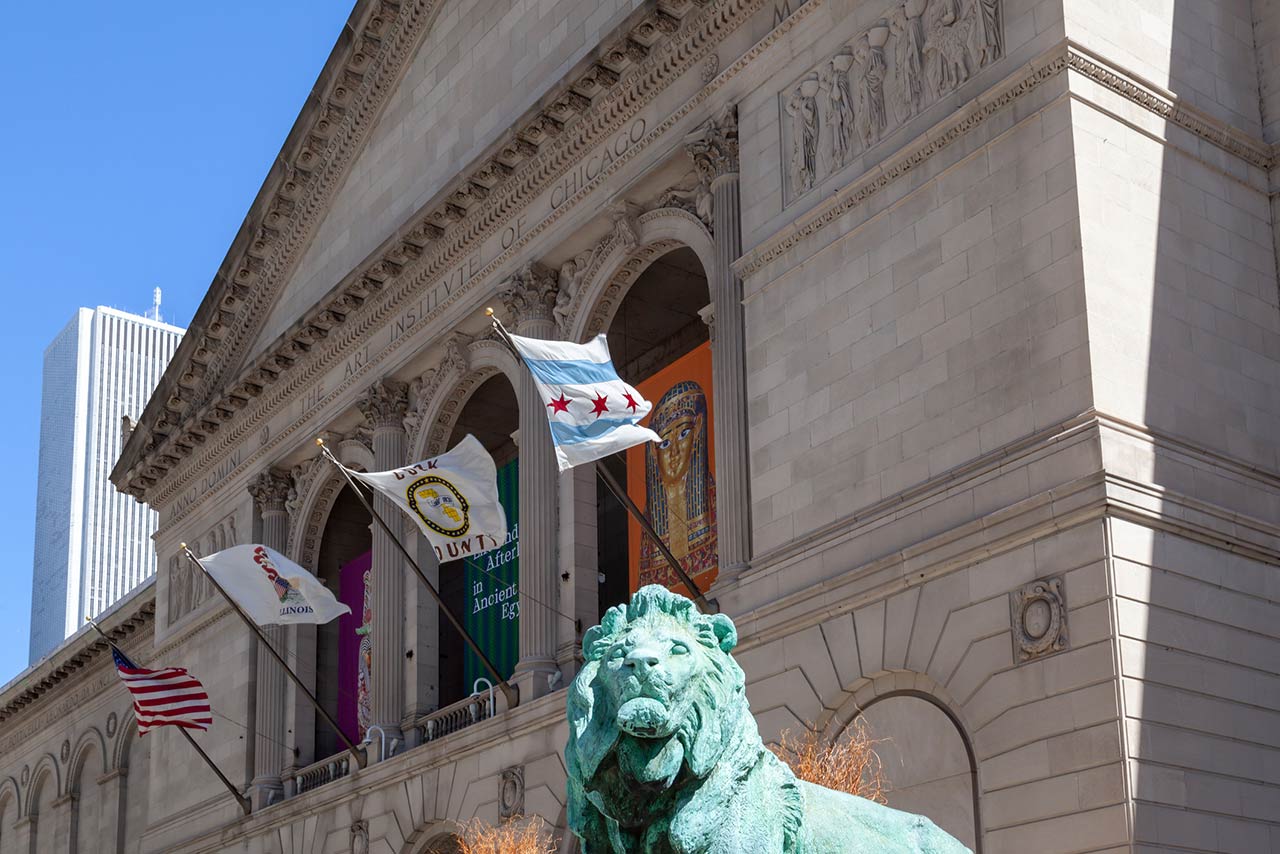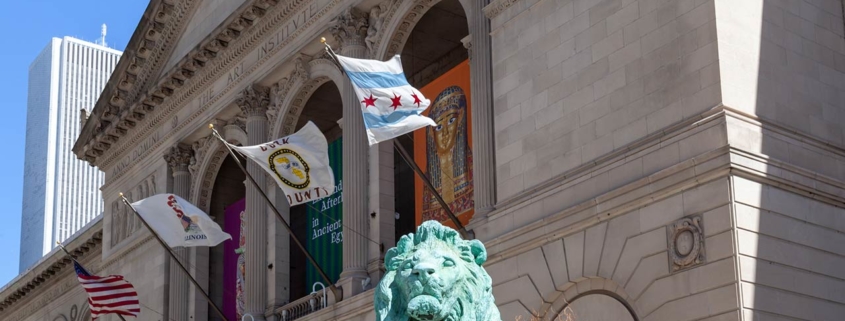Neighborhood News—Grrr…The Lions of Michigan Avenue

The Art Institute of Chicago, 111 S. Michigan Avenue, is a global icon in the world of art. But ask tourists and locals alike how you’d recognize the building in Chicago’s Loop, at the south end of Grant Park, and there’s one universal answer:
“It’s the one with lions,” they’ll say.
Through the holiday season, the Lions are standing guard wreathed for the season in brilliant red and green. But those two lions have also celebrated every Bears Super Bowl victory, Chicago Sky championship, Chicago Blackhawks Stanley Cup championships, and Chicago Bulls championships with official logo helmets and face masks covering their majestic visages.
Why Lions?
It started with a prominent animal sculptor named Edward Kemeys, and his wife Laura, also a sculptor. According to an Art Institute blog, Kemys and his wife came to Chicago in 1885, when the Art Institute decided to hold an exhibition of some of Kemeys’s small animal sculptures. They also were working on sculptures to be used at the 1893 Columbian Exposition, later the permanent home for the Art Institute on Michigan Avenue.
During this period, Mr. and Mrs. Kemeys were approached by benefactor Mrs. Henry Field, who commissioned the animal sculptors to create the two Art Institute lions in memory of her husband. In May 1894, the bronze lions took their place on pedestals in front of the museum.
Fun fact: The Art Institute of Chicago’s blog says the lion on the north pedestal is “on the prowl.” The other, “in an attitude of defiance” on the south pedestal was, according to the artist, “the most difficult I have ever attempted. The design called for two lions “to stand upon the flanks of the great external entrance stairway.”
And what happened to the Kemys? According to Wikipedia sources, they created other important works, including ‘Panther and Deer,’ and ‘Coyote and Raven.’ A colossal head of a buffalo for the facade of the station of the Pacific railroad at St. Louis, Missouri. Kemeys died in Washington, D.C., on May 11, 1907. He and his wife are buried in Arlington National Cemetery.
Free and lovely to look at
As the Loop Business Alliance notes, The Art Institute of Chicago is the second largest art museum in the country, with a collection of approximately 300,000 works of art. But unlike most of the works of art in this renowned structure, the two-ton lions can be seen 24 hours a day, seven days a week, 365 days a year…for free. But don’t go further than the lion’s green-bronzed eyes after hours…no one knows what the night can do!
Alison Moran-Powers and Dean’s Team Chicago

